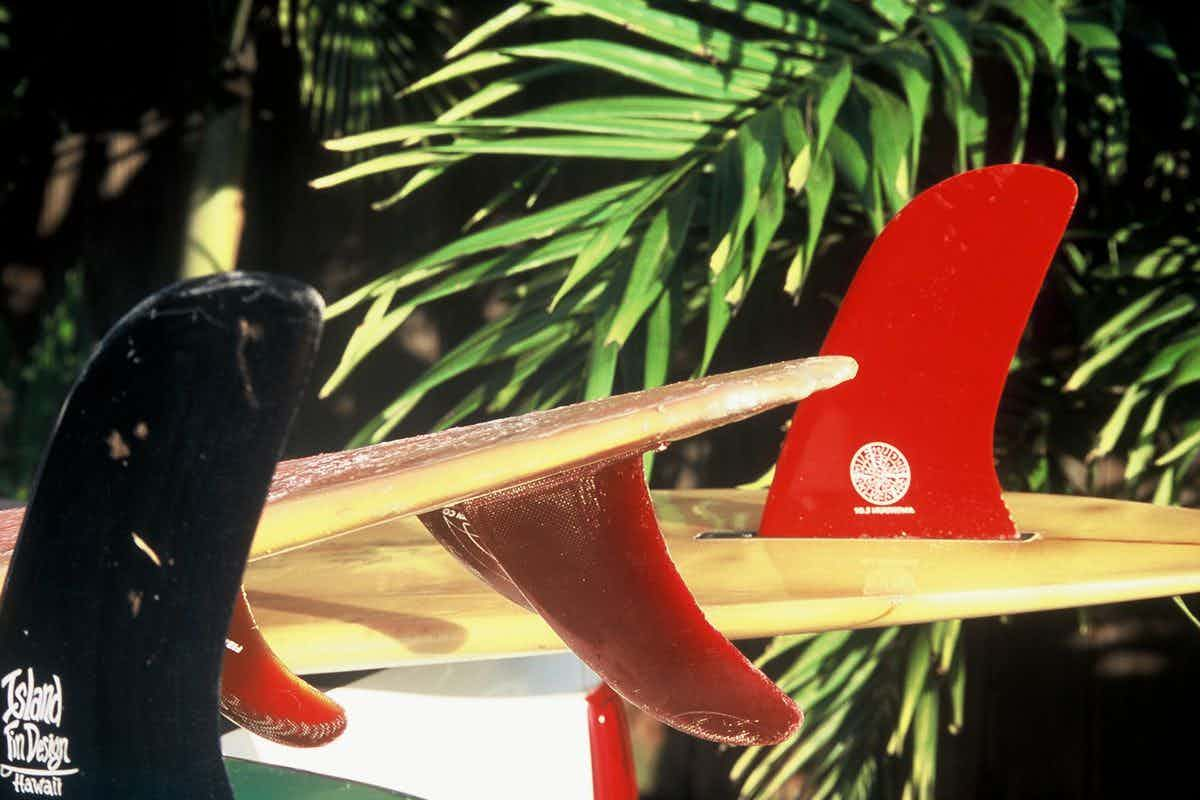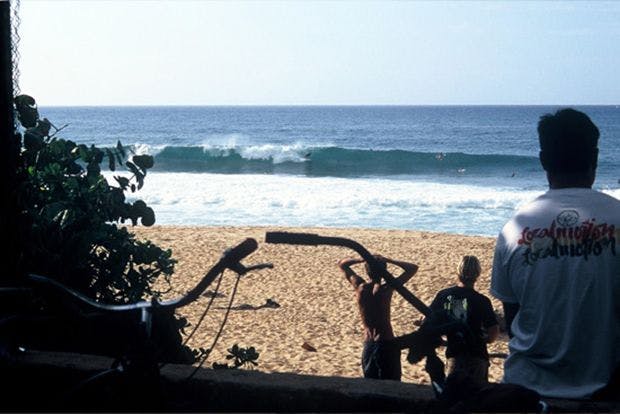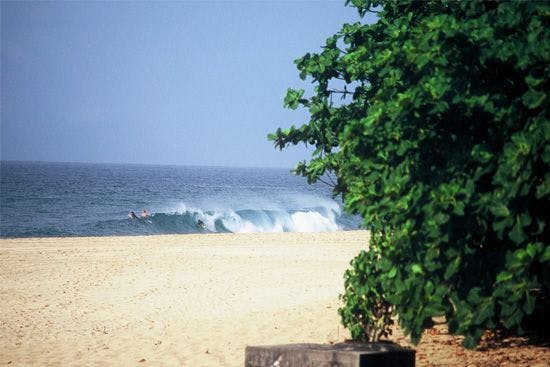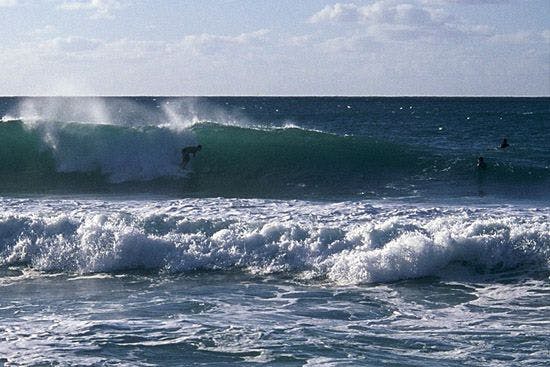TravelDeparture Gate: The North Shore of Oahu

It’s December, and for surfers the word December pretty much reads as “Hawaii”. It’s the time of year when the sand is washed off the beaches of the North Shore leaving the distinctive winter berms and exposing the reefs, and when storms in the North Pacific send regular swells southeast towards this isolated island chain. It’s also the pinnacle of the contest calendar with the Vans Triple Crown of Surfing (culminating with the Pipe Masters), The Eddie and various other events happening, meaning that the world and his wife will be on the North Shore to compete, congratulate and spectate. Through the month of December the North Shore of Oahu can boast some of the best waves on the planet as well as some of the greatest spectacles in competitive surfing. Do you need a better reason to put it on your bucket list?

Photo: The North Shore bike path means that checking the surf is easy. Here, some spectators check out Rocky Point.
The North Shore of Oahu, surfing’s Mecca, is the location of what is commonly referred to as the Seven Mile Miracle – a series of surf breaks (many of which are world class) stretching from Haleiwa in the west to Velzyland, just beyond Sunset Beach in the east.
Situated in the middle of the Pacific Ocean straddling the 20° N line of latitude, the Hawaiian Islands are the peaks of enormous volcanoes, or seamounts, formed by the northwesterly movement of the Pacific Oceanic plate over a hotspot underneath the Earth’s crust. Oahu was formed by a lava flow 3.4-2.2 million years ago, with Kauai to the northwest being older and Molokai to the southeast having been formed more recently. The ancient lava flows now form the reefs that trip up the powerful pacific swells that come marching down out of the northwest pacific each winter. And trip up they do – with no continental shelf to slow them down or barrier reef to block or dissipate them, the waves that break just meters from the sand along the North Shore are carrying all of the power of the winter storms that generated them. Early in the winter the predominant westerly direction of the swells break somewhat cleaner than the later swells that arrive from a more northerly or northeasterly direction.
During the winter months the predominant winds are the east and nor’ easterly trade winds which blow cross/offshore. If a cold front passes close to the islands then the result is often south westerly Kona winds, which blow cross shore and aren’t great for many spots along the North Shore of Oahu.

Photo: It’s possible to find uncrowded waves if you go looking.
And now, to the surf breaks; where else do you find such a heavy concentration and variety of surf spots? In any ordinary situation, Pipeline would sit at the top of the pile thanks to the spectacle it provides the surfing world with. It is a spellbinding wave that captures our attention with its deadliness and awesome beauty. But then just down Kam Highway is Waimea, an iconic big wave spot and a surf break of major historical significance, whilst in the other direction you find the challenging, shifting peaks of Sunset. When you then consider that most of the other spots along the North Shore such as Rocky Point, Log Cabins or Haleiwa are world-class waves on their own that are simply overshadowed by their celebrity neighbors, the class of the North Shore becomes apparent.

Photo: Pipeline
However, with such a blessed combination of situation, geology and meteorology, there are bound to be a few downsides. What are they? Well, everyone wants a piece of the pie, particularly in the height of winter when there are as many photographers on the beach as there are surfers in the line-up. The North Shore gets crowded and competitive, and in waves of consequence this causes a problem. A successful season on the North Shore (be it competitively or in terms of exposure) can make or break a professional surfer’s career so there are some hungry hunters paddling around. Add to this mix all of the local surfers and visitors ticking surfing in Hawaii off their “to-do” list and you have yourself a recipe for confrontation. Surfing on the North Shore is often very much a case of knowing your etiquette, exercising discretion and waiting your turn – if you even get one. That said, as soon as you head away from the big-name breaks it is possible to surf great waves with very few people out and much less pressure. Landing in Hawaii with low expectations for your wave count improves your chances of enjoying your trip. Head there to see in person the waves that you’ve seen in so many magazines and movies. Enjoy the atmosphere, the shave ice and the ahi, and hopefully you’ll get a few memorable waves in amongst it all.
WHERE: Honolulu (HNL)
WHEN: November to January
WHY: Because Hawaii is the spiritual home of surfing.
HOW: Step-up shortboard or semi-gun, plus spares. A gun if you’re willing and able. Extra length and extra foam is a necessity for dealing with the power of the waves here.